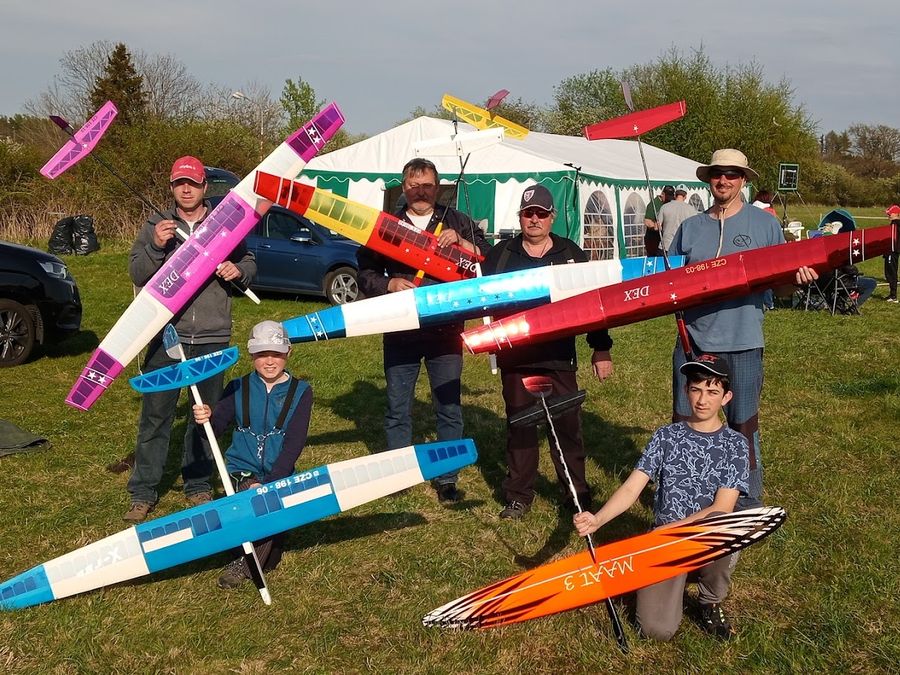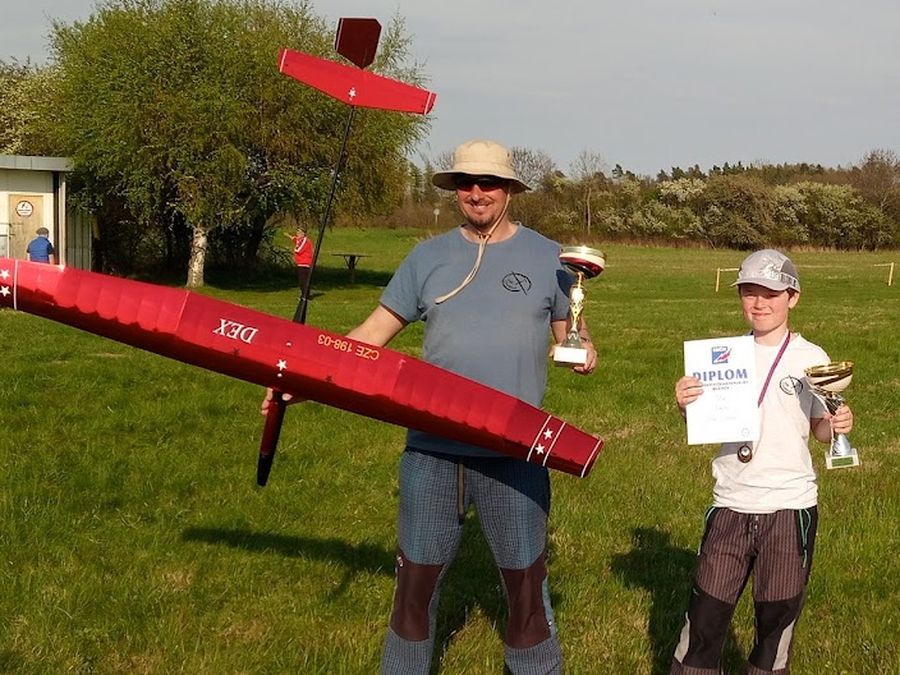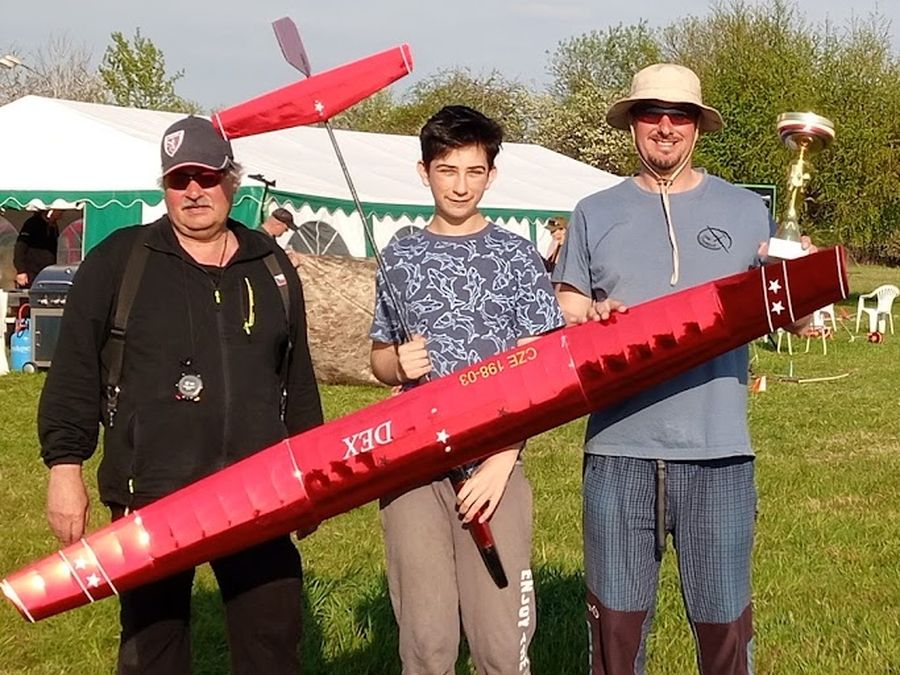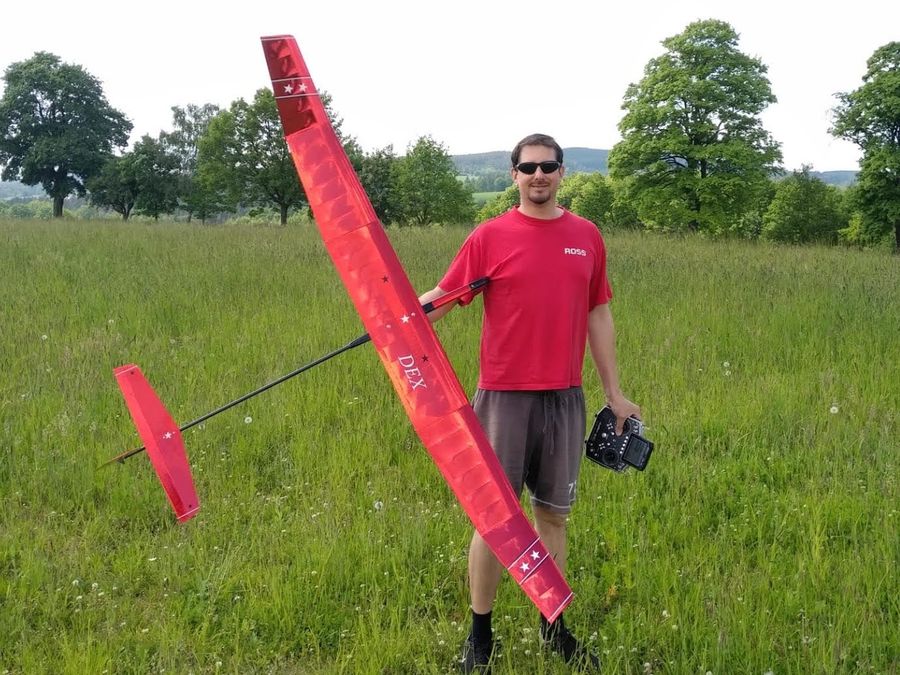I met RES models already when this category was created. However, it was mostly at RCVS competitions. At first, they were rather strange flutters with meaningless errors, contradicting the good flight characteristics of RC gliders. The biggest mistakes I saw were in the short fuselage, often with small tail surfaces in addition, and the huge depth of the wing. How many times these models resembled Middle Stick motorcycles. That's why my dad and I wondered if it wouldn't be worth making a miniature RCVSky - the model must be much better in everything after all the experience.
So the Dex model is made by my dad and follows on from the long-term development of RC gliders of the RCVS category (formerly V2). Specifically, it is based on his Nex and Nyx models, which are undoubtedly the best RC gliders in this category at the moment. The results, popularity and durability of these types speak for themselves. At first glance, Dex has different proportions than other RESs. I will try to break down each part of the model and justify why I think it might be better that way.
I'll start with the wing. The NACA 4409 airfoil used throughout the span has been proven for years on RCVS category models and its use was clear from the start. Its huge advantage is the considerable range of speeds. With a greater load on the model, it has greater gliding against the wind, on the contrary, it can fly even with a small surface load when there is no wind. We have tried many times the newer airfoils like AG, SD and others, but they did not work very well for us (certainly also because the RCVS models are not allowed to have flaps like the RES). Glider with these profiles had to approach at much higher speeds and hitting the point exactly was more difficult. They only made sense in stronger winds. That way, I can speed up Dex" on approach to land, so that he doesn't deviate anywhere from my direction. On the contrary, I brake it before the point in order to hit the center better.
We also wanted to preserve the slenderness of the wing. The Dex has a wing depth of 200mm at the root. It could be argued that this is not too much, but due to its universality, we chose this value. I wouldn't even be afraid of a depth of 180 mm in the wind. Everyone knows that slim wings have better glide, and with the right profile, this is a huge advantage.
Wing bending has also been tried for years on the RCVS. The first models of the RC V2 category had long wing centers and short ears. Due to better turning in thermals, it had to be caught up with a large tension of the ears and even larger geometric negatives at the ends of the wing. However, it is a brake. With the division of the wing into thirds, the circling of the glider was greatly improved. The short center also has a huge advantage in that we can strengthen it far more and it can withstand heavy towing. The ears can then be lighter and overall the complete wing has a lower weight.
The low depth at the tip of the wing on the Dex changes the distribution of lift along the span and concentrates it more in the centerplane, which also contributes to better circling. I remember one of the first composite gliders I bought that had deep wingtips. Everyone made fun of him for not flying circles, but squares. It always shook when turning the circle.
The sweep of the wing is chosen as slightly negative, i.e. forward. The result is a reduction in the vertical component of the speed of the oncoming air stream, which is manifested in a quieter swirl. At the same time, the thickness of the tail surfaces increases.
I liked the long hulls from the RC handguns (F3K) and from the F5J at Vertigo. I couldn't imagine Dex or any other RC glider without it. With modern materials, manufacturers can compete to make the shortest gondola. Short tails have a huge advantage in that the glider turns much better with them and doesn't mind changing direction so much. However, there is a problem with importing, which is why I understand a number of manufacturers who build it the other way around. Even with a shorter imported "muzzle" and a long pipe, the Dex came out to me at 430 grams, so the length ratios are still excellent.
For the tail surfaces, I want to highlight the vertical. The SOP is one quarter down the tube on the Dex, modeled after Mark Drela's Boubble Dancer. Again, from the RCVS category, we know that the model responds immediately to commands. During normal flying in thermals, this feature is not so important, because I try to control the model only minimally anyway. However, it is a real advantage when approaching a point, especially when there are gusts or crosswinds. I am glad that Tomáš Bartovský quickly corrected the recent misinterpretation of the rules on some SOP discussion forums. Again, I can't imagine Dex without this element.
I also had some questions about butterfly tail surfaces. In my opinion, they have no business there. It is certainly suitable for fast models of the F3F or F3B categories, perhaps for windward models of the F5J. I know from my own experience that these small gliders are clumsy. Behind With Dad and Tomemběžné let, it is again not very well known, but only in crisis situations. It bothered me that I couldn't quickly align the model and guide it correctly to the target when swerving to land. Another problem was at minimum speeds when circling in thermals, when it did not warn against swinging. And probably my last problem was finding the right elevator and rudder ratio differentiations for different speeds and weather conditions. I believe that even a beginner from the modeling circle would not be able to cope with it or even find out why the model reacts so badly to commands.
I probably don't need to describe Dex's equipment in detail. I control the model with a JETI DC-16 RC kit. I have a JETI R5L receiver. I have GWS servos in the fuselage and in the wing, but I could imagine better KST X06 servos next time. The rudder is connected to the servo by a cable, but the elevator has two torsion springs with a diameter of 0.4 mm and a length of 80 mm, similar to the F3K models. It is pulled back by a rubberized steel cable. Steel cables are a must, because Kevlar and other threads stretch a lot due to moisture and stress. With this detail, we significantly lightened the rear part of the model.
Anyone who has Dex from me got a jack instead of a switch. Again, I have it on every hand. It has a huge advantage – there is no need to open the cabin. It can be glued, so it won't fall off even with a harder landing. The jack connector serves as a switch when we insert a plastic spike into it, and at the same time as a charging connector.
Because of all these features and advantages, I really appreciate the Dex model. Of course, he gave me the greatest joy at the first official championship of the Czech Republic, where thanks to him and good advice from my dad and helpers, I won the basic part and then the final.
|







